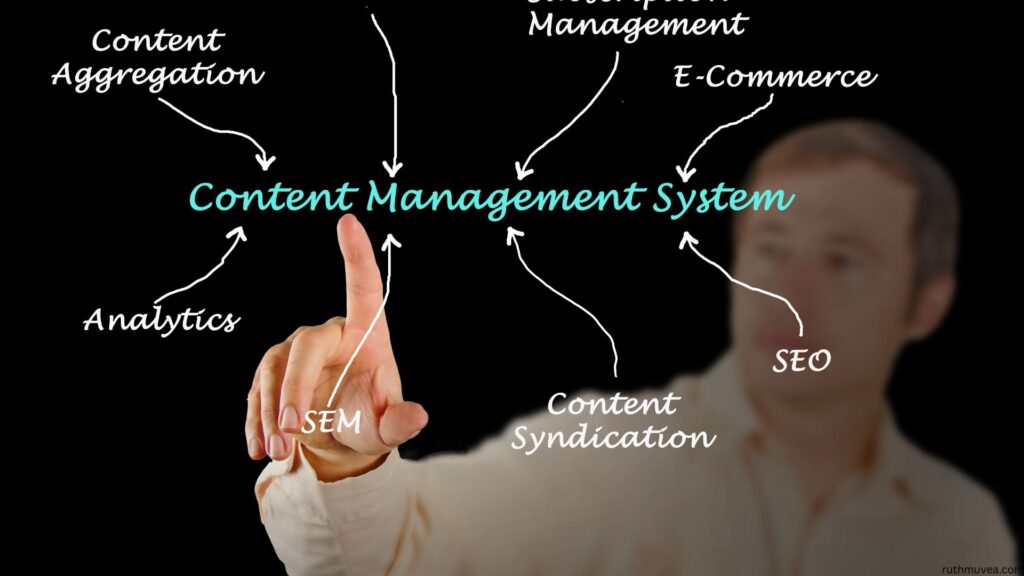VidIQ has become an indispensable tool for YouTube creators looking to optimize their content and grow their channels. However, knowing how to properly use VidIQ’s extensive features can make the difference between modest improvements and explosive channel growth. This comprehensive step-by-step guide will walk you through every aspect of using VidIQ effectively, from initial setup to advanced optimization techniques.
Getting Started: VidIQ Setup Process
Step 1: Create Your VidIQ Account
1.1 Visit VidIQ Website Navigate to the official VidIQ website and click on the “Get Started Free” button. You can begin with their free plan to explore basic features before upgrading.
1.2 Choose Your Registration Method
- Sign up using your Google account (recommended for YouTube integration)
- Create a new account with email and password
- Ensure you use the same Google account connected to your YouTube channel
1.3 Complete Profile Setup Fill in your basic information including:
- Channel name and niche
- Content creation goals
- Current subscriber count
- Primary content language
Step 2: Install the VidIQ Browser Extension
2.1 Download the Extension
- Visit the Chrome Web Store or Firefox Add-ons store
- Search for “VidIQ Vision for YouTube”
- Click “Add to Chrome” or “Add to Firefox”
- Allow necessary permissions for YouTube integration
2.2 Verify Installation
- Navigate to any YouTube video
- Look for the VidIQ sidebar on the right side of the video
- If visible, your installation was successful
Step 3: Connect Your YouTube Channel
3.1 Channel Authorization
- Click on “Connect Channel” in your VidIQ dashboard
- Grant permissions for VidIQ to access your YouTube analytics
- Confirm the connection by verifying your channel appears in the dashboard
3.2 Initial Channel Audit VidIQ will automatically perform an initial audit of your channel, analyzing:
- Current video performance
- SEO optimization levels
- Channel growth patterns
- Competitor landscape in your niche
Mastering VidIQ’s Core Features
Step 4: Conducting Effective Keyword Research
4.1 Access the Keyword Research Tool
- Navigate to the “Research” tab in your VidIQ dashboard
- Click on “Keyword Inspector” for detailed keyword analysis
4.2 Find High-Value Keywords
- Enter your primary topic or seed keyword
- Analyze the results focusing on:
- Search volume (aim for 1,000+ monthly searches)
- Competition score (look for scores under 60 for easier ranking)
- Overall keyword score (VidIQ’s proprietary metric)
4.3 Build Your Keyword List
- Save promising keywords to your keyword list
- Create themed keyword groups for different content categories
- Note seasonal trends and timing considerations
4.4 Use the Keyword Generator
- Input your main topic
- Review the generated keyword suggestions
- Filter results by search volume, competition, and relevance
- Export your keyword list for content planning
Step 5: Optimize Your Video Content
5.1 Pre-Upload Optimization Planning Before creating your video:
- Select 3-5 target keywords from your research
- Plan your title incorporating the primary keyword naturally
- Outline key points that relate to your chosen keywords
- Consider trending topics in your niche
5.2 Title Optimization
- Keep titles between 60-70 characters for full visibility
- Place your primary keyword near the beginning
- Make titles compelling and clickable
- Use VidIQ’s title analyzer for optimization suggestions
5.3 Description Optimization
- Write detailed descriptions (200+ words minimum)
- Include your primary keyword in the first 25 words
- Add secondary keywords naturally throughout
- Include relevant hashtags (3-5 maximum)
- Add timestamps for longer videos
- Include social media links and calls-to-action
5.4 Tag Strategy
- Use your primary keyword as the first tag
- Include variations and related keywords
- Add broad category tags
- Use VidIQ’s tag suggestions feature
- Aim for 8-12 relevant tags total

Step 6: Utilize the SEO Scorecard
6.1 Access Your SEO Score After uploading a video:
- Open the video in YouTube Studio
- Check the VidIQ browser extension sidebar
- Review your overall SEO score
6.2 Improve Individual Elements The scorecard evaluates:
- Title optimization: Keyword placement and length
- Description quality: Keyword density and completeness
- Tag effectiveness: Relevance and coverage
- Thumbnail potential: Click-through rate predictions
- Overall optimization: Comprehensive SEO health
6.3 Implement Recommendations
- Address red-flagged areas first
- Make incremental improvements to yellow areas
- Aim for an overall score of 80+ for optimal performance
Step 7: Analyze Competitor Content
7.1 Identify Your Competitors
- Use VidIQ’s competitor tracking feature
- Add 3-5 channels in your niche
- Include both similar-sized and larger competitors
7.2 Study Successful Videos Analyze competitor videos that perform well:
- Note their keyword strategies
- Study their title formulations
- Examine their thumbnail designs
- Review their content topics and formats
7.3 Find Content Gaps
- Identify topics your competitors haven’t covered
- Look for underperforming videos in your niche
- Spot trending topics early in your category
Step 8: Monitor Video Performance
8.1 Track Key Metrics Monitor these essential metrics:
- Views and impressions
- Click-through rate (CTR)
- Average view duration
- Subscriber conversion rate
- Revenue (if monetized)
8.2 Use Real-Time Analytics
- Check performance within first 24 hours
- Monitor early engagement signals
- Adjust promotion strategy based on initial performance
8.3 Weekly Performance Reviews
- Analyze which videos performed best
- Identify patterns in successful content
- Adjust future content strategy accordingly
Advanced VidIQ Techniques
Step 9: Leverage Trending Content Opportunities
9.1 Set Up Trend Alerts
- Configure alerts for your niche keywords
- Monitor trending hashtags in your category
- Set up competitor video alerts
9.2 Capitalize on Trends Quickly
- Create content around trending topics within 24-48 hours
- Use trending keywords in your optimization
- Participate in relevant trending conversations
Step 10: Optimize Your Channel Strategy
10.1 Channel Keywords Optimization
- Add relevant keywords to your channel description
- Optimize your channel trailer for search
- Create keyword-rich playlists
10.2 Content Calendar Planning
- Use keyword research to plan future content
- Schedule content around seasonal trends
- Balance evergreen and trending content
10.3 Cross-Video Optimization
- Link related videos in descriptions
- Create keyword-themed playlists
- Use end screens and cards strategically
Measuring Success with VidIQ
Step 11: Set Up Performance Tracking
11.1 Define Your KPIs Establish key performance indicators:
- Monthly subscriber growth target
- Average video view goals
- Watch time objectives
- Revenue targets (if applicable)
11.2 Create Custom Dashboards
- Set up tracking for your most important metrics
- Monitor competitor performance comparisons
- Track keyword ranking improvements
11.3 Regular Performance Audits
- Conduct monthly channel performance reviews
- Analyze which optimization strategies work best
- Adjust tactics based on data insights
VidIQ Best Practices and Tips
Content Optimization Tips
Research Before Creating Always conduct keyword research before producing content. This ensures you’re creating videos people are actively searching for.
Balance SEO and Quality While optimization is important, never sacrifice content quality for SEO. Great content with good SEO beats over-optimized poor content.
Stay Consistent Use VidIQ consistently across all your videos. Sporadic optimization efforts won’t yield significant results.
Common Mistakes to Avoid
Keyword Stuffing Avoid cramming too many keywords unnaturally into your titles and descriptions. Focus on natural, relevant keyword integration.
Ignoring Analytics Don’t just optimize and forget. Regularly review your analytics to understand what’s working and what isn’t.
Copying Competitors Exactly While competitor analysis is valuable, don’t copy their strategies exactly. Use insights to inform your unique approach.
Advanced VidIQ Features for Pro Users
Step 12: Utilize Premium Features
12.1 Advanced Keyword Research
- Access historical search data
- Use bulk keyword research tools
- Leverage competitor keyword analysis
12.2 Thumbnail A/B Testing
- Test different thumbnail designs
- Measure click-through rate improvements
- Optimize based on performance data
12.3 Advanced Analytics
- Access detailed audience insights
- Track revenue optimization opportunities
- Monitor advanced engagement metrics
Troubleshooting Common VidIQ Issues
Browser Extension Problems
- Clear browser cache and cookies
- Update to the latest extension version
- Check YouTube permissions
Data Synchronization Issues
- Refresh your YouTube channel connection
- Wait 24-48 hours for new video data to populate
- Contact VidIQ support for persistent issues
Keyword Research Limitations
- Free accounts have limited daily searches
- Upgrade to access advanced features
- Use keyword research strategically to maximize free searches
Conclusion: Maximizing Your VidIQ Investment
Successfully using VidIQ requires consistent application of its features combined with high-quality content creation. By following this step-by-step guide, you’ll be able to:
- Optimize your videos for better search visibility
- Understand your audience and competitors better
- Make data-driven content decisions
- Track and improve your channel’s performance
Remember that VidIQ is a tool to enhance your content strategy, not replace creative thinking and quality production. The most successful creators combine VidIQ’s insights with their unique voice and valuable content to build thriving YouTube channels.
Start with the basics outlined in this guide, gradually incorporating more advanced techniques as you become comfortable with the platform. Consistent use of VidIQ’s optimization strategies, combined with regular performance analysis and adjustment, will help you achieve sustainable YouTube growth and success.
The key to mastering VidIQ lies in treating it as an ongoing process rather than a one-time setup. Regular optimization, continuous learning, and strategic application of insights will transform your YouTube channel from a hobby into a data-driven content machine that consistently reaches and engages your target audience.

